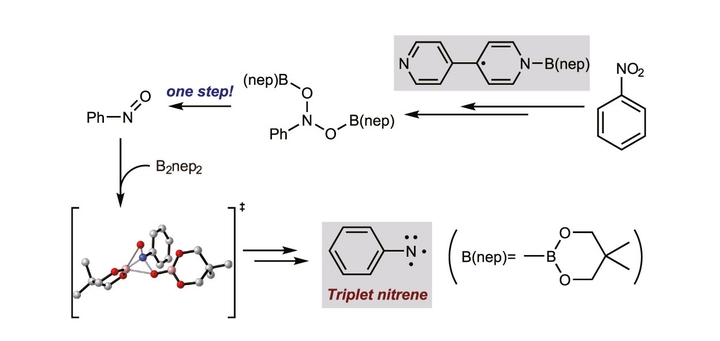DFT Study on the Mechanism of 4,4′-Bipyridine-Catalyzed Nitrobenzene Reduction by Diboron(4) Compounds.

Abstract
Diboron(4) compounds serve as useful reagents for borylation, diboration, and reduction in organic synthesis. A variety of pyridine derivatives have been found capable of activating diboron(4) compounds, and different reaction mechanisms have been identified. 4,4'-Bipyridine was found to activate diboron(4) to form N,N'-diboryl-4,4'-bipyridinylidene in 2015, and very recently, it has been found that this transformation is crucial in the 4,4'-bipyridine-catalyzed reduction of nitroarenes by bis(neopentylglycolato)diboron (B2nep2), which features the formation of arylnitrene intermediates. However, the mechanism of N,N'-diboryl-4,4'-bipyridinylidene formation, as well as its role in the transformation of nitroarene to arylnitrene, remains unknown. In this work, we investigated the possible pathways of this intriguing transformation and discovered several important intermediates through density functional theory (DFT) calculations. An N-boryl-4,4'-bipyridyl radical was found to be a crucial intermediate in both the formation of N,N'-diboryl-4,4'-bipyridinylidene and the reduction of nitroarene. A type of single-step reaction with three stages, including a dissociation and two migration steps, was identified in the generation of nitrosobenzene and its reduction. Arylnitrene formation was found to occur on a triplet potential energy surface, and an intersystem crossing was found to be important for achieving a reasonable activation energy barrier for nitrene formation. We anticipate our work to provide deeper insights into the nature of this reaction that could facilitate further rational design of pyridine- and bipyridine-based catalysts.